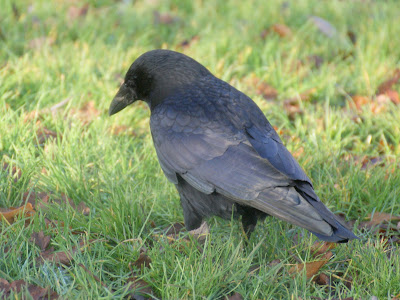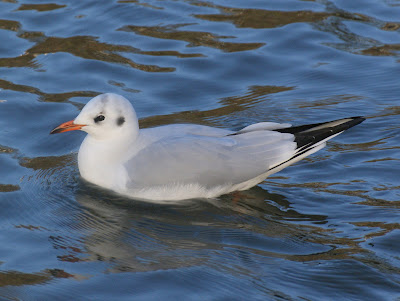"The weather outside is frightful". The words of the Christmas song say it all . It has rained almost all day of every one of the ten days that we've been in London. This hasn't put a damper on our holiday festivities but it has meant that my birding here has been limited to looking out for birds while taking brief walks in local parks and watching birds in the garden of the house where we're staying.
The main garden visitors have been those two most English of all birds, a Blackbird and a Robin.
A walk in Clissold Park turned up more Carrion Crows and Blackbirds.
I always enjoy visiting the ponds in Clissold Park because they have a range of water birds that are so used to people that they are easy to photograph. Coots and Moorhens abound.
Although Mallards are the most common ducks, there are plenty of Pochards - the males with bright orange eyes - and Tufted Ducks, too.
A Little Grebe proved too elusive to photograph but Black-headed Gulls were another story.
The Stoke Newington reservoirs and Abney Park graveyard produced several more bird species, but I'll leave reporting on those for another day.
.

















































